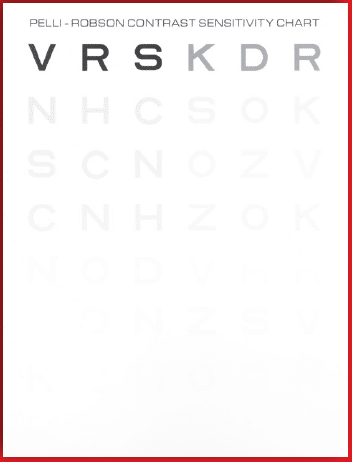
EyeOnVision February, 2021 – Testing for Low Vision
A CLOSER LOOK
Vision Rehabilitation is Part of AMD Care
Dr. August Colenbrander –
Age-related macular degeneration (AMD) does not just affect the retina. It severely affects people’s lives. Paying attention to this aspect will only become more important as the population ages and more otherwise healthy individuals become affected. This paper will discuss the need for teamwork to overcome the difference between medical care, which addresses the causes of AMD, and rehabilitative care, which addresses the consequences.
BEHIND THE TEST
Berkeley Rudimentary Vision Test (BRVT) – It all started with Blind Cricket Competitions
For people with extremely poor vision, assessing visual acuity in the past has been mostly a matter of subjective analysis – once a patient can no longer read the top line of a Snellen chart, clinicians resorted to categorizing vision as counting fingers, hand motion, or light perception. However, there are no standardized procedures or testing distances for these tests. But now, thanks to Ian Bailey, OD, MS, FAAO, the Berkeley Rudimentary Vision Test overcomes those obstacles and provides clinicians with a simple, efficient test of spatial vision. Under development since 2007, Dr. Bailey and colleagues developed the Berkeley Rudimentary Vision Test because “we needed a standardized method, a protocol by which you can systematically take measurements, beyond the limits of the letter chart.”
The test itself was developed after the World Blind Cricket Council asked Dr. Bailey to join an advisory committee on the rules and methods that were being used to classify the vision of athletes participating in Blind Cricket competitions. He first developed a PowerPoint presentation to systematically quantify acuity beyond the typical charts and over the following year “we took patients with very low vision and measured their acuity and abilities with this computer presentation. But we quickly realized we needed to have something that didn’t rely upon a computer display or electricity – something we could use in the developed world as easily as in the Developing World countries,” Dr. Bailey said. Working in with Hasan Minto, OD, FAAO, and A. Jonathan Jackson, Ph.D., MCOptom, FAAO, the group developed a set of three card pairs—a single tumbling E card pair, a grating acuity card pair, and a basic vision card pair. The way the cards work is simple and standardized, Dr. Bailey explained.
PRODUCT PROFILE

“The Multi-Tool of Vision Testing!”
The Krug Vision Disability Screening Card
The Vision Disability Screening Card has been developed for Agency professionals and primary eye and medical physicians to easily screen for functional loss of near vision affecting activities of daily living (ability to read 1 M newsprint). It also incorporates a line of 20/100 distance vision letters to screen for legal blindness using the updated 2007 criteria (71 FR 67037).
Manufactured and found exclusively at Precision Vision!

MNRead Acuity Charts
Available in Dutch, German, and French, English & Spanish!
MNRead Acuity Charts are continuous text reading cards used for functional vision and low vision assessments. The cards are comprised of 19 calibrated passages to determine a patient’s reading acuity, maximum reading speed, and critical print size. MNRead charts can also be used for research, pediatrics, and special education. The MNRead Charts have a wide range of applications which include the aid of prescribing optical correctors such as handheld and lens mounted magnification solutions as well as filters and illumination.
ASK PRECISION VISION

Q: Can you tell me which measurement of visual function is most likely affected by AMD?
A: Precision Vision, Inc’s team posted this question to our trusted friend and maven, Dr. August Colenbrander. Below is his response:
“I assume that the motivation behind this question is the desire to detect early stages of AMD as effectively as possible before the patient is recognized as a known case of AMD. Early detection is desirable because early treatments are generally more effective. The answer to the early detection question is that there is no single parameter that will always be most effective. I will discuss several options.”
EYEON LAUGHTER








